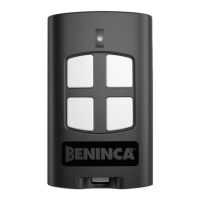5
The receivers compatible with the new TO.GO/HAPPY ARC transmitters are available in 4 versions:
External box receiver to apply to the inside of the controller container, if the controller is not
provided with built-in receiver.
This type of receiver has a terminal board for the connection of the power supply, the radio
antenna and two settable outputs. Being a 100% independent device, it can be used for any
application requiring a radio control.
In this guide we will refer to the model ONE2WB (article code 9673103), a two-channel receiver
that handles ARC, HCS and fixed codes
Plug-in receiver for controllers equipped with a quick molex connector.
This type of receiver, once inserted into the controller connector, works line a built-in receiver,
receiving power and antenna signal from the controller, while the switch channels are handled by
the controller. Programming is carried out using the button and the LED indicator on the receiver.
In this guide we will refer to the model ONE2WI (article code 9673102), a two-channel receiver
that handles ARC, HCS and fixed codes
Built-in receiver, integrated into the controller, programmable via dip-switches/trimmers.
This type of controller features a programming button and a LED indicator that allows the user
to set up the functions of the integrated receiver.
In this guide we will refer to the model CPJ3, the controller incorporated in the geared motors
JM.3, the procedure is also similar to that of other controllers equipped with integrated receiver.
Built-in receiver, integrated into the controller, programmable via LCD display.
This type of controllers always has a radio menu through which you can perform all the operations
for programming the integrated receiver. The radio menu also allows for the management of
advanced features of each device.
In this guide we will refer to the model BRAINY, the procedure is, once again, similar to that of
other controllers with LCD display
It is important to know that most Benincà receivers store transmitter codes in a special
removable memory (EEPROM).
The picture to the side shows an EEPROM installed on a controller, in the instructions included
with the device always show the position of the EEPROM.
Should you need to replace a controller or a receiver, you can remove the EEPROM from the old
card and install it on the new one (as long as the devices are of the same model).
This will prevent having to store again all the transmitters, a very useful feature especially if a
receiver is used by many users (condominiums, residences, communities).
There is also a special high-capacity EEPROM available (art. MEM 2048) able to store a large number
of transmitters (2048) compared to standard EEPROM (that can store usually onyl 64 codes).
THE RECEIVERS
EEPROM
>
>

